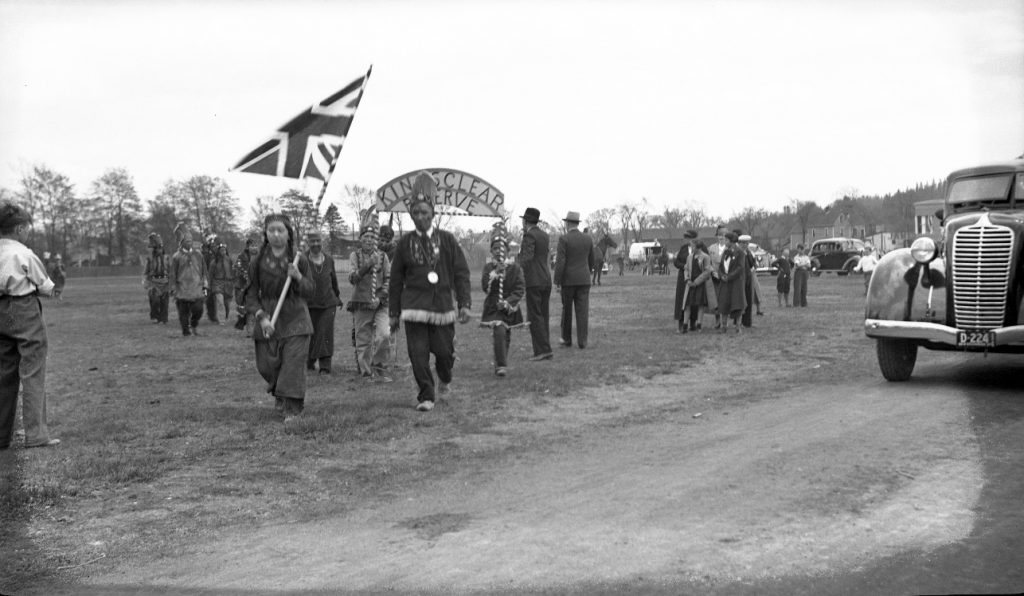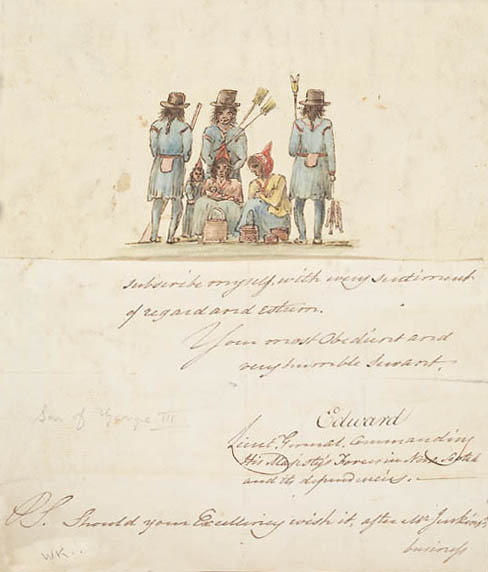Materials required: whiteboard, projector, logbook

Public Archives of New Brunswick P120-19-32
Look carefully at the photograph above and read the caption. Why would the Pilikewiyik (from Pilik) be honouring the coronation of a British King?
Read aloud the two quotes below as dramatically as possible. Explain that the Indigenous people believed that a treaty was between the two parties and their creator. What is an orator? Who does he represent? Why would Chief Simon be concerned about the sun? How did he feel about it — what did it signify? In the treaty of 1752 excerpt, how would Governor Hopson have felt about sending this letter to his boss, the Earl of Holdernesse?
First quote:
At the Treaty of the Two Brothers 1703 – Governor Dudley of Massachusetts with Representatives of Addroscroggins, Norridgewocks, Kennebets and Penobscots at Falmouth:
Captain Simmo, who was their orator arose and said that they acknowledged his Favour in giving them a Visit at [sic.] such a juncture, with so many of the Council and Gentlemen of both Provinces, assuring him that they aimed at nothing more than Peace: and “that as high as the Sun was above the earth, so far distant should their Designs be of making the least breach between each other.” They presented Governor Dudley a belt of wampum and invited him to the Two Pillars of Stone which were called Two Brothers.
Wheelock, Edward Penhallow’s Indian Wars Boston 1924. Source.
Second quote:
Letter of Governor Hopson to the Right Honourable, the Earl of Holdernesse concerning the Peace and Friendship Treaty 1752:
That all transactions during the late war shall on both sides be buried with the hatchet and that the said Indians have all favour, friendship, and protection shown them from this His Majesty’s government.
Source.
To get the class prepared for the next activity, talk about what a treaty is and why it might be important. Make comparisons (it is a promise – and it needs to be respected!).
- With the students create a web of the words that indicate a promise has been made between First Nations people and the Government.
- In pairs, have students create opening statements that could be part of an official opening to a treaty using the words from the web.
- Finally have the pairs re-read these treaty statements above aloud and add their own statements to them.
Jonathan Belcher, in the Treaty of 1752, said: “Protection and allegiance are fastened together by links; if a link is broken the chain will be loose.”
- What does this mean? If you don’t know, try acting it out using other students as the chain. The game of Red Rover is a good metaphor.

Is this a treaty? Why or why not? If it is not a treaty, what is it?




